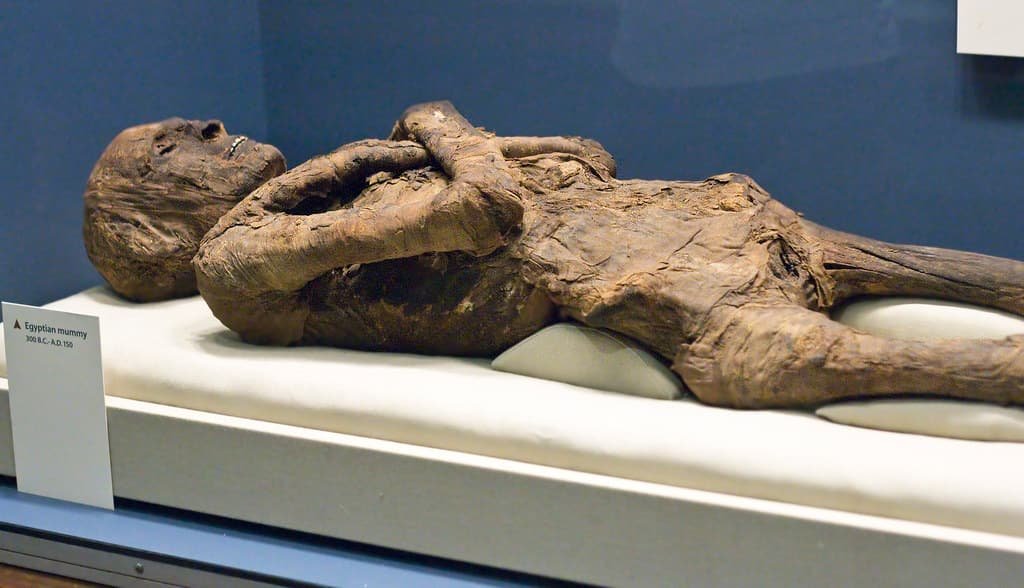Museum of Mummification is amongst the most unique and beautiful sights to see in Luxor. Situated on the east bank of the Nile opposite Luxor Temple, this small but rich museum is dedicated entirely to the study of the ancient Egyptian art of mummification. While most tourists come to Luxor to view the huge temples and royal tombs, the Museum of Mummification gives the rare opportunity to get up close and personal with how and why the Egyptians preserved souls and bodies-to-death-in-animal forms for all eternity.
What is Mummification?
Mummification was a very religious and complex operation in ancient Egypt carried out to ready the body for the life hereafter. Egyptians believed in life after death, so preserving the body was necessary for the journey of the soul. It included the removal of internal organs, dehydrating the body with natron salts, and wrapping it in linen. Priests invoked a series of sacred rites to protect the spirit from harm as it traveled to the underworld.
The museum depicts the steps in detail with the help of artifacts, drawings, tools, and even real mummies.
Museum Layout and Highlights
1. Introductory Hall
Upon entry, one is greeted by a dimly lit hall with walls engraved with ancient hieroglyphics. The hall introduces the belief system of mummification and the afterlife in ancient Egypt.
2. Mummification Tools and Materials
The actual tools for mummification are on display:
Bronze hooks to extract the brain
Samples of natron salts
Canopic jars (for holding the stomach, liver, lungs, and intestines)
Linen wrappings and amulets for protection
3. Mummified Animals
One of many surprising sections is mummified animals: cats, fish, crocodiles, baboons, and many more. These animals were sacred and were often presented as gifts to the gods or buried with their owners.
4. Real Human Mummies
A few human mummies are presented in climate-controlled display cases. Each is displayed with extensive information regarding who they were, how they were mummified, and the significance of the items buried with them.
5. Multimedia Displays
Certain areas are fitted with screens displaying videos and infographics, explaining the process of mummification in a modern, educational context. It is ideal for kids or visitors who wish to learn visually.

Why Visit the Museum of Mummification?
Rare Focus-It is probably one of the few museums in the world focusing solely on mummification.
Educational-Learn the full procedure of how the ancient Egyptians turned science into sacred art.
Accessible Location-Just steps away from Luxor Temple and the Corniche.
Short & Sweet-You can tour the museum in 30-45 minutes-ideal for a quick dose of culture.
What Can You Learn at the Museum of Mummification?
A visit to the Museum of Mummification is not limited to viewing the artifacts; it is an opportunity to understand the faiths and value systems of ancient Egyptians. Visitors learn that religion, science, and ritual were closely allied with every stage of the mummification process. The exhibits demonstrate how the ancient Egyptians perceived the body and the soul (ka, ba, and akh) and how preserving a person’s corporeal form was necessary for their existence in the afterlife.
The exhibits, therefore, give an insight into:
Medical knowledge of the day (e.g., surgery, preservation techniques)
Religious texts and symbols used in burial rites
Social order and its influence on burial practices by class
Visitor Information
Location: Corniche el-Nil Street, East Bank, Luxor, Egypt
Opening Hours: 9:00 AM – 9:00 PM (subject to change)
Photography: Generally prohibited inside exhibit halls
Best time to visit: Early mornings or late afternoons for fewer crowds
Tips for Visitor
Combine your visit with Luxor Temple, which is close by, or a Nile cruise walk.
Bring a guidebook or download an audio-guided app for additional context.
Keep silent inside-it is a sober, spiritual place.
Museum of Mummification is a hidden treasure in Luxor that reveals one of the most enigmatic rituals of ancient Egypt. Instead of just gazing upon the great tombs of the dead, here you discover how those bodies were so perfectly preserved for thousands of years. An eye-opening, informative, and very memorable stop for those interested in ancient science, religion, or culture. Don’t miss the opportunity to plunge into the sacred secrets of Egyptian preservation.




